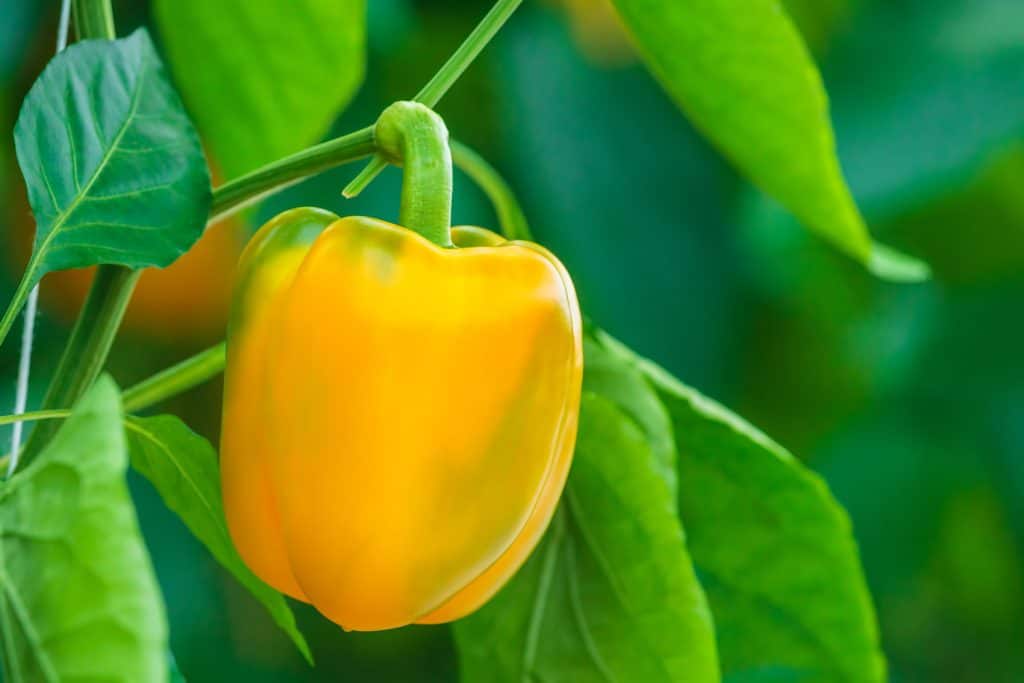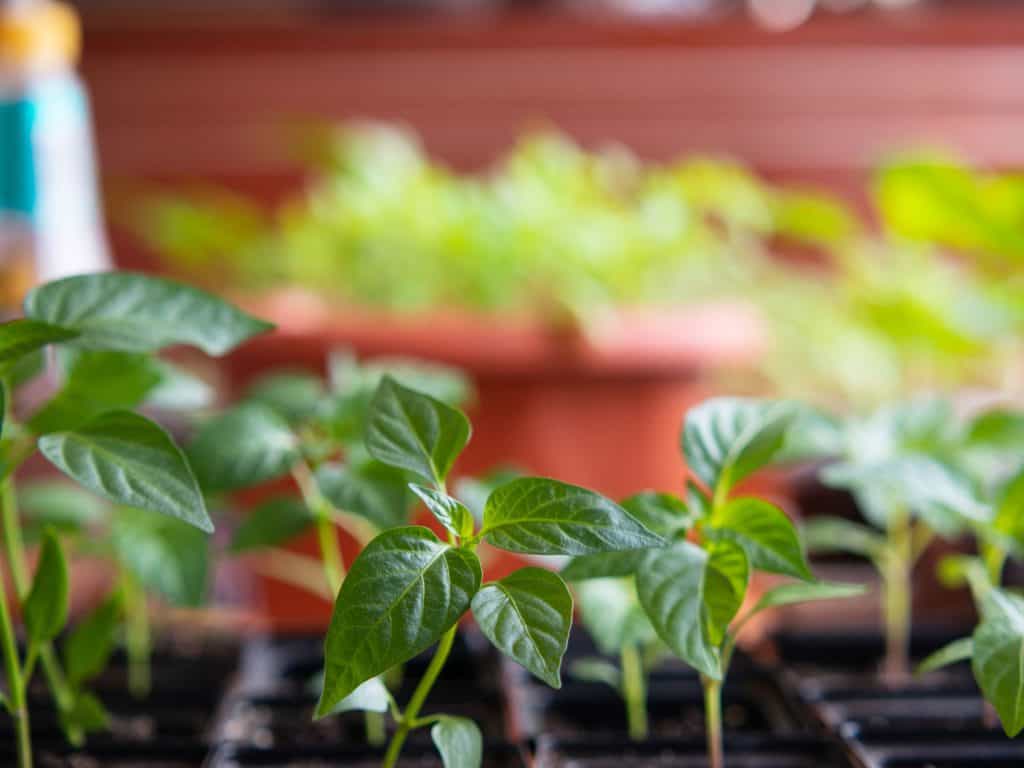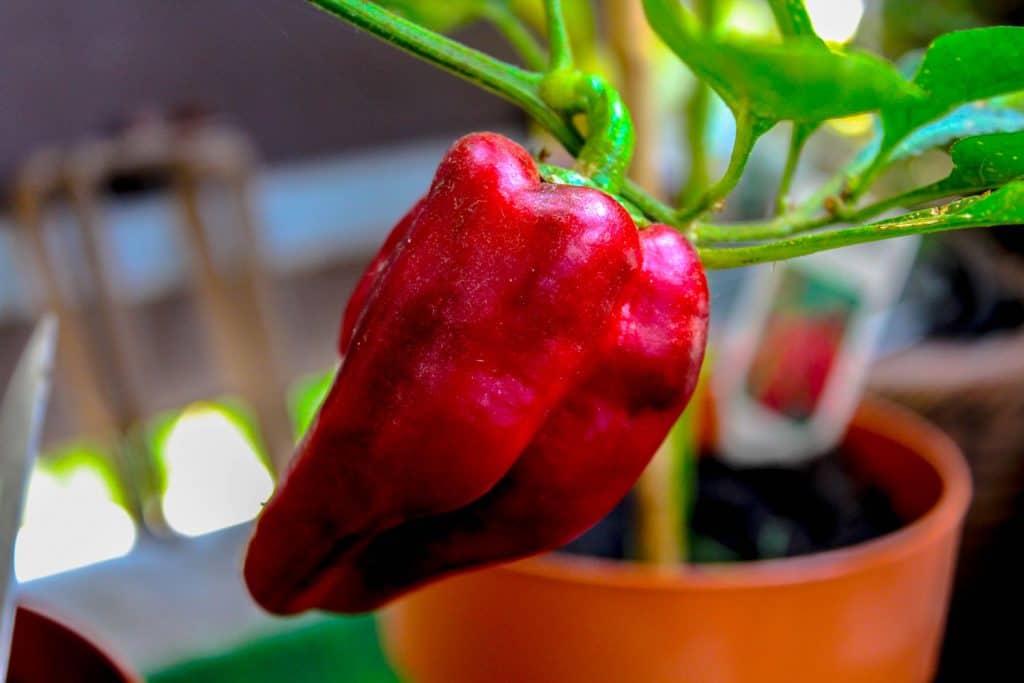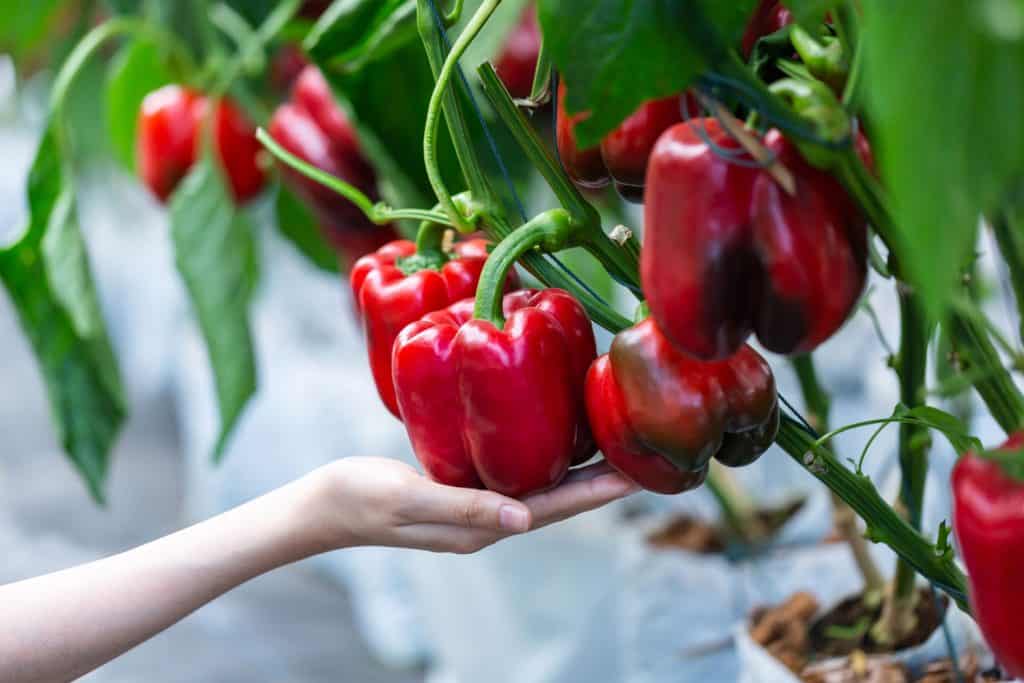Growing vegetables indoors is fun and easy to do. If you were curious about growing bell peppers from scraps, continue reading. Bell peppers are colorful, full of antioxidants, and enjoyed raw or cooked. Shop for mature peppers at your local store for a good start.
You will need to harvest any seeds inside your bell peppers and prep them for germination into seedlings. It is best to use quality potting soil, a deep pot, and ensure the indoor climate is appropriate for your plants to thrive. When possible, choose organic peppers.
If you were interested in a plant easily grown from scraps indoors, try raising bell peppers indoors in containers. You can successfully grow bell peppers indoors with produce scraps via the following steps.
- Gather seeds from the inside of mature bell peppers. Dehydrate the seeds before germinating into seedlings
- Transfer stable sprouts to a larger pot and water. Within 60 to 90 days, a new crop of bell peppers will appear.
Be careful when growing bell peppers from scraps. Many hybrid or GMO vegetables purchased from stores may taste differently than the source of your scraps. However, with a little bit of patience and care, you can fight food waste and grow delicious bell peppers indoors.
![Red and green bell peppers growing in a greenhouse. Home agricultural activity during covid-19 social distancing, How To Grow Bell Peppers Indoors [Inc. From Scraps]](https://gardentabs.com/wp-content/uploads/2022/01/How-To-Grow-Bell-Peppers-Indoors-Inc.-From-Scraps-683x1024.png)
About Indoor Bell Pepper Plants

If you can, you will want to start your bell pepper plants 8 to 10 weeks before the last frost of the spring season. Bell peppers are a warm-weather loving plant that thrive in balmier temperatures, but you can make adjustments to grow these plants year-round.
These veggies germinate the fastest if you can keep the temperatures between 77 and 90 degrees Fahrenheit. If you can, place seedlings in a seed tray to germinate and set them on top of the refrigerator, in a sunny window, or near a heating pad.
To get a tastier crop of vegetables, it is suggested to use the scraps of ripened red bell peppers. Younger bell peppers are green in color, and require additional time on the vine to change color. Allow your peppers to wrinkle a bit before harvesting seeds.
Growing Bell Peppers Indoors
Growing vegetables at home is a rewarding activity. Using the scraps of bell peppers is an easy way to raise a fresh crop of tasty vegetables to enjoy in salads, soups, or sauces. Check out the following steps to make growing bell peppers an easy process.
- Take a mature bell pepper plant, split it lengthwise, and carefully remove any seeds inside. Discard discolored or damaged seeds.
- Place the seeds on a clean tray or paper towel to dry under the sun or a plant light for an hour.
Check out this soil thermometer on Amazon.
3. Place seeds into a seed tray to germinate. Once you see sprouts with visible leaves, transfer to a larger pot after 1 to 4 weeks. 4. Keep plants 12 to 24 inches apart and place them in soil with good drainage. Water regularly. Wait 60 to 90 days to harvest peppers.
A quick note; bell peppers self-pollinate to produce fruit. It is good to give the plant a light shaking when you see blooms to spread the pollen around. Play around with the types of peppers you use to harvest seeds for their color and flavor and try cross-pollination.
Which Bell Peppers Scraps Are Best?
Start your indoor garden and choose bell peppers that are more likely to deliver great-tasting results. Understand, the bell peppers you use for scraps may be a hybrid or GMO. The peppers propagated from these types of plants often taste differently than the parents.
To increase the chances of growing a desirable crop of bell peppers with full flavor and texture, harvest scraps from red bell peppers. When bell peppers are red, they are the most mature, nutritious, and flavorful. A strong, ripe pepper breeds better-tasting crops.
How Much Light Do Bell Peppers Need?
For your bell pepper plants to thrive indoors they will require a minimum of six hours of sunlight daily. However, if you want your bell peppers to develop a lot of fruit, plan to expose your plants to 16 hours of light a day.
Opt for a strong plant light if you are growing bell peppers in a shady spot or enough natural sunlight exposure. Bell pepper plants do better when they have strong, direct light throughout their day. For an indoor garden, 40 watts for every square foot is good.
When purchasing a grow lamp for your bell peppers, choose a fixture with a broad spectrum. You will need a light with high intensity to promote growth. Look for effective LED grow lights that give off white, red light, and blue light to support a healthy plant.
Check out this lamp for plants on Amazon.
How Long Does It Take To Grow Bell Peppers Indoors?
Under the right conditions, it doesn't take long to grow bell peppers indoors. It takes about two weeks for seeds to germinate into seedlings. After a week to 21 days you should have sprouts that can handle being transferred to a larger pot.
Keep the soil temperatures between 65 to 75 degrees Fahrenheit to encourage your new bell pepper plants to thrive. Bell peppers love a warm, moist environment. After about 60 to 90 days following transplantation, each plant should display between 5 to 10 edible fruits.
Depending on the type of bell pepper used for seeds, indoor temperatures, soil quality, and watering, the amount of time to grow your vegetables may vary. For best results, use the scraps of mature red bell peppers. For the most part, you can expect veggies after 60 days.
Check out these germination trays on Amazon.
Can I Grow Peppers Indoors All Year Round?

You can expect a bell pepper plant to survive an average of three years. However, under the right conditions, you may be able to grow healthy pepper plants for up to a decade. If your plants get enough sunlight or use a grow lamp, you can grow peppers year-round.
Some gardeners may grow peppers for one season after bearing fruit. But, if you take the proper steps to prep and care for your bell peppers over the winter, they can come back for years and continue to thrive and bear fruit. Choose the variety you grow wisely.
During the winter, reduce your watering schedule and make sure the plants are warm enough with a heating pad or use a small greenhouse set-up. Bell peppers are perennials that can survive year-round indoors, just make sure they are warm and get enough light.
Check out this potting mix on Amazon.
Can Bell Peppers Be Grown In Pots?

If you are going to start growing bell peppers indoors, you will need to have some pots on hand. At a minimum, you will need to pot your plants in a container with a width and depth of 10 to 12 inches to accommodate growth. Choose a pot and soil that support drainage.
Ideally, when growing bell peppers in containers, there should be enough space for up to two gallons of soil. Plus, there should be enough drainage holes to prevent root rot, and maintain a reserve of water. Keep only one plant per pot to allow enough room for the roots.
Growing bell peppers in pots is more suitable for growing these plants indoors year-round. Two to three plants can nestle together when germinating your scraps from seed to seedlings, but they will need more space once established. The soil pH should be 6.5 to 6.8.
Don't stress starting your bell pepper plants in pots immediately. Use a seed tray for germinating young plants and transferring them to a large enough container once they are strong enough and have leaves. Use enough well-draining soil to cover the root ball and don't overwater.
Check out this pot with drainage on Amazon.
Conclusion

We hope the next time you purchase bell peppers, fight food waste and try growing a crop of these delicious veggies. Bell peppers are easy to grow at home, which is excellent for newbies and experienced green thumbs. Indoor vegetable gardening is also very satisfying.
Additionally, these vegetables don't take long to reach maturity. Indoor plant lovers can expect to see bell peppers on their plant after 60 to 90 days. Of course, the longer you let your bell peppers stay on the vine, they will change from green to red, orange, or yellow.
Before you go, you won't want to miss out on reading the following helpful articles.





